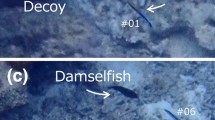Summary
We have showed that the males of active nests fed properly by themselves, whereas in nests toward their completion only the young were capable of doing so. The adults of these last always have a poor or no nutrition. The worker-wasps feed them but with reticence. In compensation, they seem very apt to solicit the regurgitations of the larvæ.
So long as the nest remains active and has the benefit of abundant food, the males are likely to draw their own food from various sources, as well as the other inhabitants. But, when the nest is in danger or the young queens appear, the purveyors desert them for the benefit of the other workers, of the queens and their larvæ, as we have in different circumstances showed (Montagner 1963). The principal source of feeding of the males is then essentially in the pursuit of the larval regurgitations. The workers do participate a little pursuit of the larval regurgitations. The workers do participate a little in their feeding, but this very food must be taken out of the portion of the brood.
It seems then that the males never acquire to perfection the mechanism of trophallaxy, those stereotyped acts which become reflexes between the workers. These are individuals insufficiently adapted to the social life of the nest, having but few dealings with their workers and living as parasites on the regurgitations of the larvæ. Moreover, we have showed that they are not able to feed the larvæ, even when they are given abundant food and that they feed by themselves (Table XI).
Zusammenfassung
Wir haben gezeigt, dass die Männchen der aktiven Stöcke sich selbst gut ernähren, während in den älteren Stöcken nur die Jungen dazu fähig sind. Die Erwachsenen dieser letzteren ernähren sich kaum oder gar nicht. Sie werden von den Arbeiterinnen nur ungern gefüttert. Dagegen scheinen sie, sehr fähig zu sein, von den Larven das wiedergekäute Futter zu verlangen.
So lange der Stock aktiv bleibt und reichlich mit Futter versorgt wird, sind die Männchen anscheinend in der Lage, wie die andern Bewohner, sich ihr Futter an verschiedenen Stellen zu verschaffen. Wenn aber der Stock sich auflöst oder wenn die Gründerinnen erscheinen, lassen die Versorgerinnen sie in Stich zu güngten der anderen Arbeiterinnen, der Gründerinnen und deren Larven sich die Männchen vor allem vom wiedergekäuten Futter der Larven. Die Arbeiterinnen beteiligen sich wohl ein wenig an der Fütterung der Männchen, diese aber selbst soll vom Futteranteil der Brut genommen werden.
Es scheint dann, dass die Männchen den Mechanismus der Trophallaxis, jene stereotypischen Handlungen, die bei den Arbeiterinnen zu Reflexen werden, nie vollkommen erwerben. Das sind Individuen, die dem Gesellschaftsleben des Stockes nicht angepasst sind, die nur wenige Beziehungen zu dem Arbeiterinnen haben und als Schmarotzer vom wiedergekäuten Futter der Larven leben. Wir haben übringens gezeigt, dass sie nicht in der Lage sind, die brut zu füttern, sogar wenn sie reichlich mit Futter versorgt werden oder wenn sie sich selbst ernähren (Tafel XI).
Similar content being viewed by others
Bibliographie
Bowen (V. T.), 1950. — Manganese metabolism of social Vespidæ.J. exp. Zool.,115, 175–205.
Courtois etLecomte (J.), 1958. — Sur un procédé de marquage des abeilles butineuses au moyen d'un radio-isotope.C. R. Acad. Sci. Paris,247, 147–149.
Delvert-Salleron (F.), 1963. — Etude au moyen de radio-isotopes des échanges de nourriture entre reines, mâles et ouvrières d'Apis mellifica L.Ann. Abeille,6 (3) 201–227.
Gosswald (K.) undKloft (W.), 1958. — Radioaktive Isotope zur Erforschung des Staatlebens den Insekten.Umschau,24, 743–745.
Janet (Ch.), 1895. — Etudes sur les fourmis, les guèpes et les abeilles.Mém. Soc. zool. Fr.,8, 1–140.
Le Masne (G.), 1951. — Echanges de nourriture, trophallaxie et transports mutuels chez les fourmis. InGrassé,Traité de Zoologie, X (2), 1104–1119.
Montagner (H.), 1963. — Contribution à l'étude du déterminisme des castes chez les Vespides.C. R. Soc. Biol., Paris,157, 147.
Montagner (H.) etCourtois (G.) 1963. — Domnées nouvelles sur le comportement alimentaire et les échanges trophallactiques chez les guêpes sociales.C. R. Acad. Sci., Paris, 256, 4092–4094.
Author information
Authors and Affiliations
Rights and permissions
About this article
Cite this article
Montagner, H. Étude du comportement alimentaire et des relations trophallactiques des males au sein de la société de guêpes, au moyen d'un radio-isotope. Ins. Soc 11, 301–316 (1964). https://doi.org/10.1007/BF02227432
Issue Date:
DOI: https://doi.org/10.1007/BF02227432




